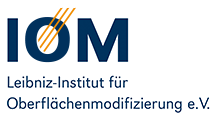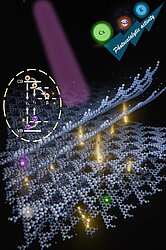In a recent study, researchers from the IOM, the Universities of Jena and Ulm, together with partners, have shown how the photocatalytic activity of ionic carbon nitrides can be specifically influenced by the choice of cations. The focus is on so-called poly(heptazinimide) (PHI) materials, which can be used for the sustainable production of hydrogen peroxide (H₂O₂). Using time-resolved spectroscopic methods and theoretical modeling, the team was able to show that the efficiency of catalysis is closely related to the dynamics of so-called dark excitons—excited states in the material that are not directly visible. Depending on the cation used (Na⁺, K⁺, or Cs⁺), the structural properties of the materials change, and with them the lifetime and mobility of these excitons. While Na- and K-PHI work efficiently, CsPHI shows significantly lower activity—an effect that can be attributed to disturbed exciton dynamics.
The investigations carried out as part of the CataLight Collaborative Research Center, TRR 234, provide important insights for the targeted development of efficient photocatalysts through structure-based material control.
The detailed results of the study were recently published in the renowned journal Advanced Science.
Publication:
Photocatalytic Activity of Ionic Carbon Nitrides is Governed by Cation-Modulated Dark Exciton Dynamics
A. Konar,J. Liessem,C. Im, M. M. Elnagar, D. Mitoraj, P. Saini, I. Krivtsov, S. J. Finkelmeyer, J. Griebel, M. Presselt, T. Jacob, R. Beranek, B. Dietzek-Ivanšić
http://doi.org/10.1002/advs.202509312

